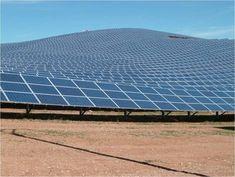
The first 16 large-scale solar farm projects, installed just days before the government deadline for incentives ran out, will contribute a remarkable 46.3 megawatts of power to the national grid, according to the NFU.
A further six solar parks have also started generating power on brownfield sites, adding another 12.9 megawatts.
Chief renewable energy adviser for the NFU Jonathan Scurlock believes that Britain’s newly-installed solar farms and parks together will generate electricity for around 12,000 households.
With the national renewable energy target set at 15 per cent by 2020, the solar parks will form part of the overall low-carbon energy package for the UK, while also contributing to energy security at a local level.
Dr Scurlock said: “The enthusiasm shown by the UK’s solar power innovators shows the substantial market potential of the land-based sector to supply renewable electricity and support the growth of low-carbon technology in Britain, even under the toughest financial conditions and working to tight government deadlines.
“Details are still emerging on exactly how many solar farms were successful in commissioning and registering to receive the renewable electricity Feed-In Tariff before government incentives were reduced on 1 August.”
He added: “As expected, the sunny South West has the greatest concentration of solar farms so far, with over 16 megawatts of capacity, but the East Midlands region has managed a close second place, with nearly 14 MW added.
As of June 2011, Britain’s solar-generating capacity was about 122 MW, mostly deployed on domestic rooftops, so these ground-mounted solar installations are adding almost 50 per cent to solar energy production.”
The NFU understands that a few sites have been unable to complete their final planned capacity in time, but may be able to use a legislative grace period to finish construction by September or October.”